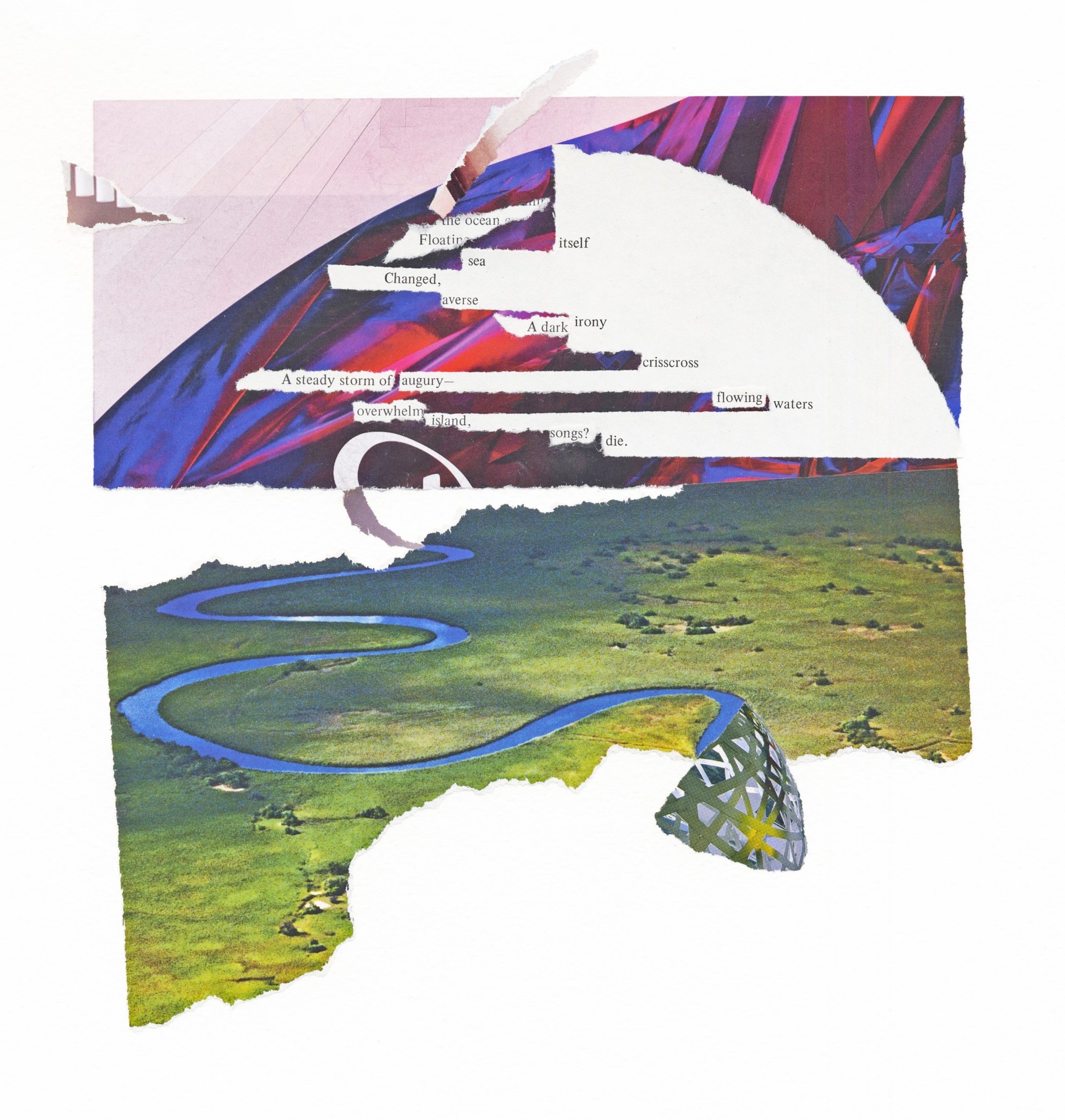Thanks to everyone who visited my recent exhibition, “Murmurings,” at Spark Gallery in Denver — or who followed along on Instagram/elsewhere. The works included in the show are explorations in fragmentary storytelling: pieced-together bits of found poetry and text give voice to abstract collage elements, as word and image intermingle. I’ve posted quite a few of the collages from the show on Instagram and have included one below.
“Never There,” collage on watercolor paper, 10 x 7,” ©2024, Janice McDonald.
In the past my work has been made almost exclusively with found color and imagery. I always stayed away from using words in my work — I had enough words in my graphic design career. But recently the murmurings from content that included words and phrases became impossible to ignore. Participation in a collage and poetry program/group also prompted me to imagine and explore new ways of merging expressive elements. So I embarked on a new series of works, allowing myself to work intuitively (and sometimes badly!) to see where this interest would take me.
Many people have asked how I make these works and I have trouble describing the process, but will try. I don’t compose the word portion first or make the collage first… it all somehow develops simultaneously. When I begin to work, a few words and images on my desk usually jump out. I arrange and rearrange, exploring how the fragments might fit together and support each other. A lot of possibilities are dismissed and pushed aside.
When an idea finally begins to emerge, I look for supporting elements. Sometimes it’s a word or phrase, sometimes an image. I hunt for linking elements to complete the idea within my existing stash and occasionally through a new search, I rarely have something come together in one session, often returning to it, for further editing and refining. I lean them up in my studio and mull them over.
Directing the viewer’s eye so that the piece “reads” is part of the challenge. A large measure of serendipity comes into play during this process, along with years of art and design experience. I’m always grateful when my efforts begin to click and come together.
It seems that staying open to what may be developing is an important part of this work flow too… not pre-supposing what story I’m telling, but letting that evolve. I’m happy to answer questions about this work flow too — feel free to leave a comment or ask a question below..
I’ve been collecting text fragments without any desire to spend the time to figure out how to organize them in some logical way. So far my storage method is to slip them inside clear sleeves that are archival and acid free. The static generated between the folded plastic holds the snippets of text in place pretty well, plus the fragments are easily scannable and readable from both sides. (These sleeves have been hugely helpful in many aspects of my studio practice and while they may get a little dinged up over time, they never wear out.)
Only a small portion of my collected imagery is stored this way, most are in larger (also uncategorized) bins. But when I’m working on several projects, the folder method helps me keep things separate and makes for relatively easy clean up.
Transparent sleeves to organize elements for specific projects (left), are now also useful for storing bits of text.










